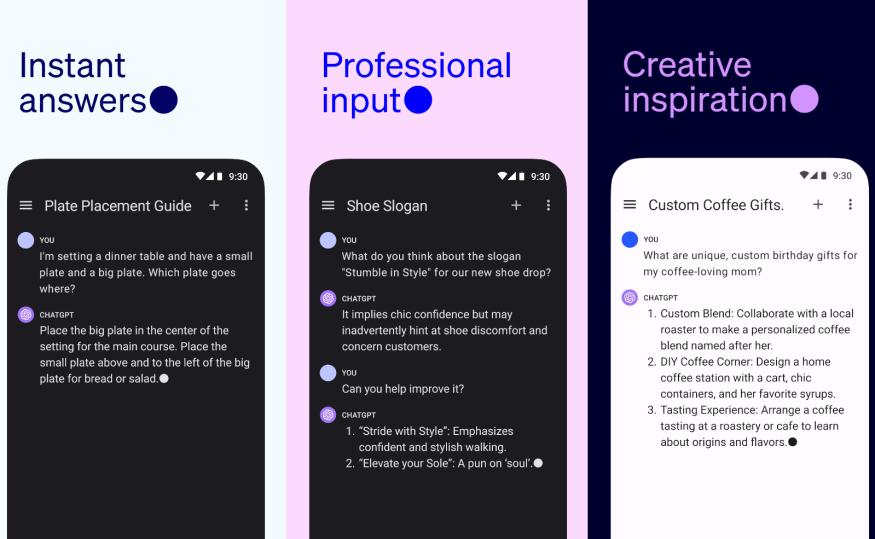
Software development is a quickly developing field that continually presents recent fads and advancements. To stay important and give inventive arrangements, associations, and developers should keep on staying aware of these headways. The main turns of events and patterns in the advancement of programming that are right now affecting the product business will be tended to in this article.
Introduction
In the present digital age, software development assumes an essential part in driving development across different areas. From web and mobile applications to big business programming arrangements, the interest in excellent programming keeps on developing. To meet these advancing necessities, programming engineers are continually adjusting to new systems, advancements, and practices. How about we dig into the universe of programming improvement patterns and developments to figure out their effect and potential?
Agile Software Development
Definition and Principles of Agile Software Development
Agile software development is an iterative and cooperative methodology that stresses adaptability, client-coordinated effort, and successive conveyance of working programming. The Dexterous philosophy advances versatile preparation, constant improvement, and fast reaction to change. It depends on four key standards: people and connections over cycles and devices, working programming over thorough documentation, client cooperation over agreement discussion, and answering change over sticking to the script.
Benefits of Agile Methodology
Agile software development offers various advantages to improvement groups and associations. By encouraging close cooperation between designers, partners, and end-clients, Dexterous empowers quicker input circles, diminished advancement cycles, and further developed item quality. Dexterous systems likewise advance straightforwardness, flexibility, and consumer loyalty by focusing on the conveyance of gradual and client-centered highlights.
Case Studies Showcasing Successful Agile Implementations
A few organizations have embraced Light-footed systems and made wonderful progress. For example, Spotify, a famous music web-based feature, took on the “Spotify Model,” a scaled Spry structure that advances independent groups and cross-practical coordinated effort. This approach permitted Spotify to quickly improve, scale its tasks, and keep an upper hand in the music streaming industry.
DevOps and Continuous Integration/Continuous Deployment (CI/CD)
Overview of DevOps and CI/CD
DevOps is a software development approach that joins advancement (Dev) and tasks (Operations) groups to upgrade cooperation, correspondence, and effectiveness all through the product advancement lifecycle. DevOps advances mechanization, nonstop reconciliation, persistent arrangement, and close cooperation between improvement, activities, and quality affirmation groups. Persistent Sending (Cd) advances the arrangement of programming to conditions for creation, while Nonstop Combination (CI) guarantees that code upgrades are regularly integrated into an indistinguishable rendition.
Advantages of Adopting DevOps Practices
By embracing DevOps rehearses, associations can accomplish quicker programming conveyance, expanded sending recurrence, and a more limited chance to advertise. DevOps cultivates a culture of coordinated effort, trust, and shared liability, bringing about superior correspondence, decreased blunders, and quicker issue goals. Moreover, the robotization and observing capacities of DevOps empower a proficient framework on the board, improved adaptability, and better asset usage.
Real-World Examples of Successful DevOps Implementations
Organizations like Netflix and Amazon have embraced DevOps standards to change their product conveyance processes and accomplish excellent outcomes. Netflix, a famous video web-based stage, executed DevOps practices to empower ceaseless organizations, further develop framework flexibility, and guarantee continuous real-time features for a huge number of clients around the world. One of the main web-based business stages on the planet, Amazon, utilizes DevOps to completely robotize innovation arrangement, send code comprehensively and faultlessly offer new elements and moves up to its clients.
Cloud Computing and Serverless Architecture
Introduction to Cloud Computing
By permitting moment online admittance to PC assets like servers, stockpiling, and information bases, distributed computing totally upset the universe of programming advancement. It offers adaptability, adaptability, and an incentive for cash while dispensing with the requirement for organizations to take an interest in building a foundation. Foundation as a Help (IaaS), Stage as a Help (PaaS), and Programming as a Help (SaaS) are only a couple of the administrations that cloud specialist organizations like Amazon Web Administrations (AWS), Microsoft Sky blue, and Google Cloud Stage (GCP) give.
Benefits of Cloud-Based Software Development
Cloud-based software development offers various benefits, including diminished framework costs, further developed adaptability, and improved cooperation. Engineers can use cloud administrations to rapidly arrange assets, explore different avenues regarding new advancements, and scale their applications in view of interest. Cloud stages additionally give powerful security highlights, mechanized reinforcements, and worldwide accessibility, empowering designers to zero in on application improvement as opposed to the foundation of the board.
Exploring Serverless Architecture and Its Advantages
Serverless design is a creative way to deal with building and conveying applications where engineers center around composing code without stressing over serving the executives. With serverless figuring, designers can separate their applications into little, autonomous capabilities that are executed because of explicit occasions. This approach offers benefits like decreased functional intricacy, programmed scaling, and cost streamlining since clients just compensation for the real execution season of capabilities.
Artificial Intelligence and Machine Learning in Software Development
The Impact of AI and ML on Software Development
Artificial Intelligence (AI) and Machine Learning (ML) are changing the software development scene, empowering developers to assemble wise applications fit for dissecting information, making expectations, and gaining from client connections. Man-made intelligence and ML procedures, for example, normal language handling, PC vision, and prescient investigation, enable programming applications to give customized encounters, computerize tedious errands, and get significant bits of knowledge from tremendous measures of information.
Applications of AI and ML in Different Industries
Artificial intelligence and ML track down applications in different businesses, including medical services, money, retail, and assembling. In medical services, simulated intelligence-controlled frameworks can aid determination, drug revelation, and customized medication. In finance, ML calculations break down market patterns, recognize fake exercises, and advance venture procedures. Retail organizations influence computer-based intelligence for request gauging, customized proposals, and stock administration. The assembling area benefits from artificial intelligence-driven robotization, prescient upkeep, and quality control.
Future Prospects of AI and ML in Software Development
The future of software development is vigorously affected by artificial intelligence and ML. As these innovations keep on propelling, designers can anticipate expanded computerization, more refined calculations, and further developed dynamic abilities. Man-made intelligence-driven chatbots and remote helpers will turn out to be more conversational and canny, altering client communications. Furthermore, ML models will turn out to be more available, enabling designers, all things considered, to integrate simulated intelligence abilities into their applications.
Internet of Things (IoT) and Edge Computing
Overview of IoT and Its Significance
The assortment of interconnected hardware, sensors, or gadgets that are fit for gathering and sharing information is known as the Web of Things (IoT). IoT empowers the consistent reconciliation of the physical and computerized universes, considering ongoing checking, information investigation, and robotization. It tracks down applications in different areas, including savvy homes, medical care, transportation, and modern cycles.
Role of Edge Computing in IoT
Edge computing is a design that carries figuring assets nearer to the information source, diminishing inactivity and empowering constant handling at the edge of the organization. In IoT frameworks, edge registering assumes an essential part in taking care of information’s serious undertakings, performing nearby examinations, and limiting dependence on cloud administrations. Edge gadgets process information locally, diminishing transmission capacity necessities, guaranteeing information security, and empowering quicker reaction times.
Use Cases of IoT and Edge Computing in Software Development
IoT and edge computing have changed different ventures by empowering imaginative applications. In the medical services area, IoT gadgets screen patients’ important bodily functions, work with distant medical services benefits, and work on the effectiveness of clinical gear. In savvy urban communities, IoT frameworks oversee traffic stream, upgrade energy utilization, and improve public security. Modern IoT empowers prescient upkeep, remote observing of gear, and improvement of assembling processes.
Low-Code and No-Code Development
Explanation of Low-Code and No-Code Development Platforms
Low-code and no-code advancement stages permit clients with restricted coding experience to assemble applications utilizing visual connection points and pre-constructed parts. These stages unique away the intricacies of customary coding, empowering clients to make useful applications through a visual, intuitive methodology. Low-code stages give harmony among adaptability and usability, while no-code stages center around straightforwardness and require no coding by any means.
Benefits and Limitations of These Platforms
Low-code and no-code platforms offer several advantages, including accelerated development cycles, reduced reliance on technical resources, and increased collaboration between business users and developers. These platforms enable rapid prototyping, iterative development, and quick deployment of applications. However, they may have limitations in terms of customization, scalability, and the ability to handle complex business logic. Developers often find a balance between utilizing low-code/no-code platforms and custom coding based on project requirements.
Examples of Successful Low-Code and No-Code Projects
Organizations across industries have leveraged low-code and no-code platforms to streamline business processes, build internal tools, and develop customer-facing applications. For instance, a retail company may use a low-code platform to create a mobile app for inventory management, while a marketing team might utilize a no-code platform to build landing pages and automate email campaigns. These platforms empower citizen developers to bring their ideas to life without extensive coding knowledge.
Blockchain Technology in Software Development
Understanding Blockchain and Its Features
Blockchain is a conveyed record technology that empowers secure and straightforward record-keeping of exchanges across numerous members. It works in a decentralized organization, where every member keeps a duplicate of the blockchain, guaranteeing agreement and permanence of information. Blockchain highlights incorporate decentralization, straightforwardness, security, and brilliant agreements, which are self-executing contracts with predefined rules.
Applications of Blockchain in Software Development
Blockchain technology finds applications beyond cryptocurrencies. It can be used to build secure voting systems, supply chain management platforms, and decentralized identity solutions. Blockchain enables tamper-proof data storage, eliminates intermediaries, and ensures data integrity. Smart contracts automate business processes and facilitate trust between parties by executing predefined actions when specific conditions are met.
Challenges and Future Potential of Blockchain Technology
Despite the fact that blockchain technology offers huge advantages, it faces difficulties connected with adaptability, energy utilization, and administrative systems. Scaling blockchain networks to handle a large number of transactions while maintaining decentralization is an ongoing concern. Additionally, energy consumption associated with certain blockchain consensus mechanisms needs to be addressed. Be that as it may, as headways proceed, blockchain can possibly upset different ventures by giving secure and straightforward answers for information the board and trust.
Progressive Web Applications (PWAs) and Mobile Development
Introduction to PWAs and Their Advantages
Progressive Web Applications PWAs are web-based applications that offer a native app-like experience across multiple devices and platforms. PWAs influence present-day web advancements, like Assistance Laborers and Web Application Shows, to convey quick, solid, and connecting client encounters. They can be introduced on clients’ gadgets, work disconnected, and send pop-up messages, obscuring the limits among web and portable applications.
Mobile Development Trends and Best Practices
Mobile development is continually developing, driven by headways in equipment, working frameworks, and client assumptions. Designers need to remain refreshed with the most recent patterns and best practices to convey remarkable portable encounters. The rising prominence of multi-stage improvement systems like Respond Local and Ripple, the execution of augmented reality (AR) and virtual reality (VR) technologies innovations, and an expanded fixation on portable application security and protection are among a couple of the latest things.
Case Studies of Successful PWA and Mobile App Development
A few organizations have embraced PWAs and portable application improvement to contact a more extensive crowd and give consistent client encounters. For instance, Twitter Light, a PWA rendition of Twitter, conveys a quick and dependable experience even on sluggish web associations. Pinterest used a PWA approach, bringing about a 40% expansion in client commitment and a huge decrease in information utilization. These examples of overcoming adversity grandstand the capability of PWAs and versatile applications in improving client commitment and extending business reach.
User Experience (UX) and User Interface (UI) Design Trends
Importance of UX and UI in Software Development
Programming improvement needs to incorporate all client experience (UX) and UI (UI) plans while they straightforwardly affect the manner in which purchasers connect with and grasp programming. UX is based on sorting out clients’ necessities, tendencies, and trouble spots to make intuitive and beguiling experiences. UI setup incorporates the visual parts, plans, and coordinated efforts that enable clients to reliably investigate and connect with an application.
Current Trends and Innovations in UX and UI Design
UX and UI configuration keep on advancing, directed by arising innovations and changing client assumptions. A few latest things incorporate dull mode plans, miniature communications, voice UIs, and moderate feel. UX fashioners are integrating human-focused plan standards, leading client exploration, and utilizing information investigation to make customized and available encounters. UI creators are investigating imaginative route designs, intuitive movements, and the utilization of energetic variety plans to make outwardly engaging points of interaction.
Case Studies Demonstrating Effective UX and UI Design
Various organizations focus on UX and UI plans to convey uncommon client encounters. Apple’s regular and ostensibly captivating association focuses play massively affecting the result of its things. Airbnb’s emphasis on client research and nonstop testing brought about a consistent booking experience. These relevant investigations complement the meaning of placing assets into UX and UI plans to make simple-to-utilize applications that resonate with clients and drive business advancement.
Conclusion
Remaining refreshed with the most recent turns of events and advancements is fundamental for designers and associations as the field of programming improvement is continuously developing. Lithe approaches, DevOps practices, man-made intelligence, ML, distributed computing, IoT, low-code/no-code improvement, blockchain innovation, PWAs, versatile turn of events, and UX/UI configuration all add to the progression of programming advancement. Embracing these patterns and improvements engages relationships to create generous, useful, and client-driven applications that drive business accomplishment.
FAQs Frequently Asked Questions
- What is the role of Agile methodology in software development? The agile methodology advances adaptability, coordinated effort, and iterative turn of events, bringing about quicker conveyance, further developed item quality, and expanded consumer loyalty.
- How does DevOps contribute to software development? DevOps works with nearer cooperation between advancement, activities, and quality affirmation groups, prompting quicker programming conveyance, expanded sending recurrence, and further developed framework dependability.
- What are the advantages of cloud-based software development? Cloud-based software development offers advantages, for example, decreased framework costs, upgraded adaptability, further developed joint effort, and powerful security highlights.
- How do AI and ML impact software development? Artificial intelligence and ML empower the advancement of clever applications equipped for dissecting information, making expectations, and giving customized encounters, prompting upgraded productivity and further developed direction.
- What are the benefits of using low-code and no-code development platforms? Low-code and no-code stages speed up application development, diminish dependence on specialized assets, and encourage joint effort between business clients and engineers, empowering fast prototyping and arrangement.


